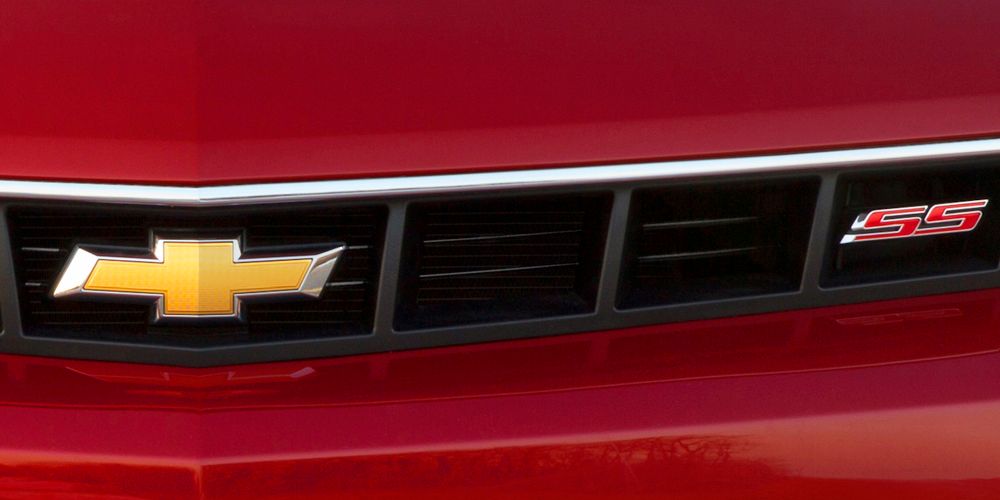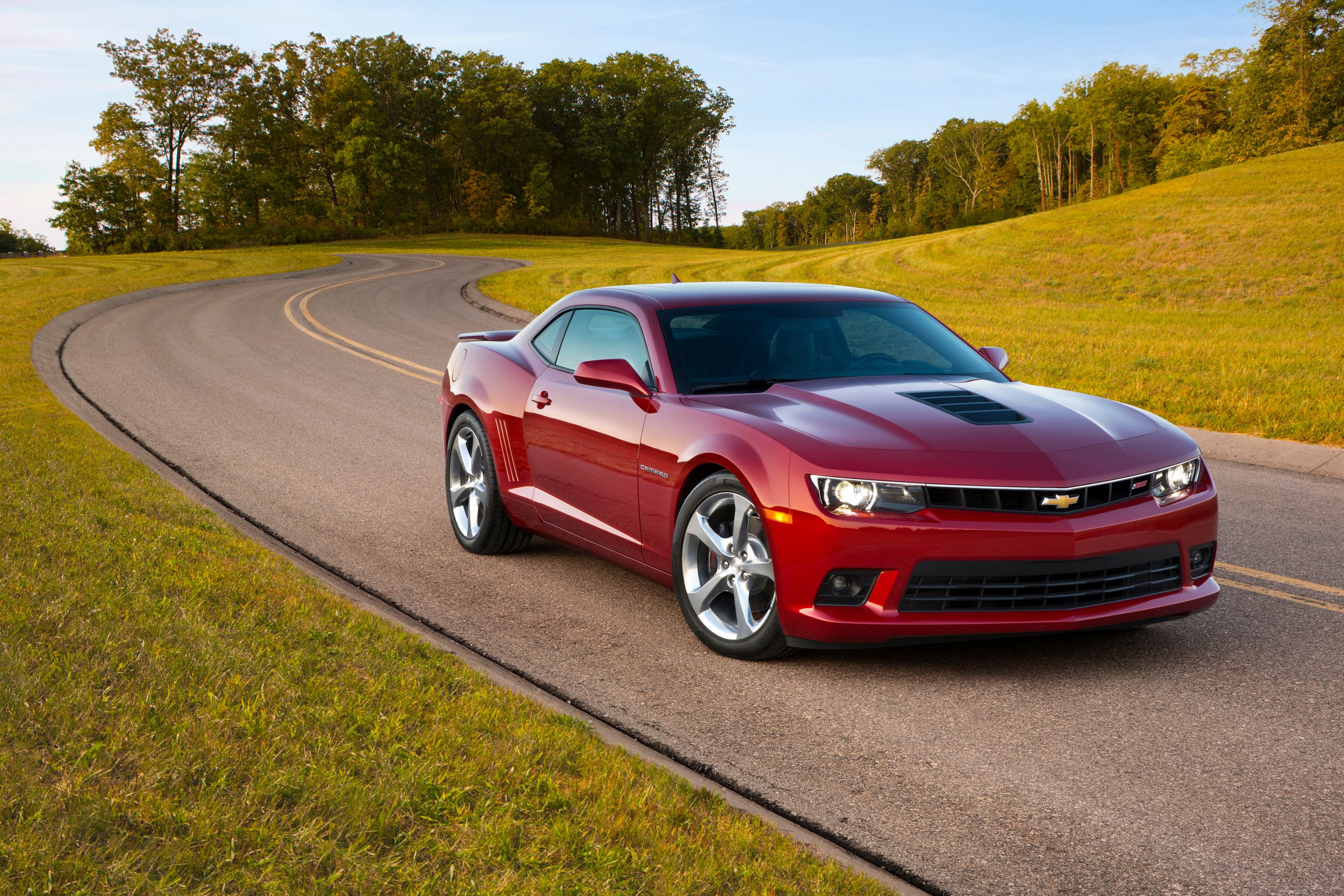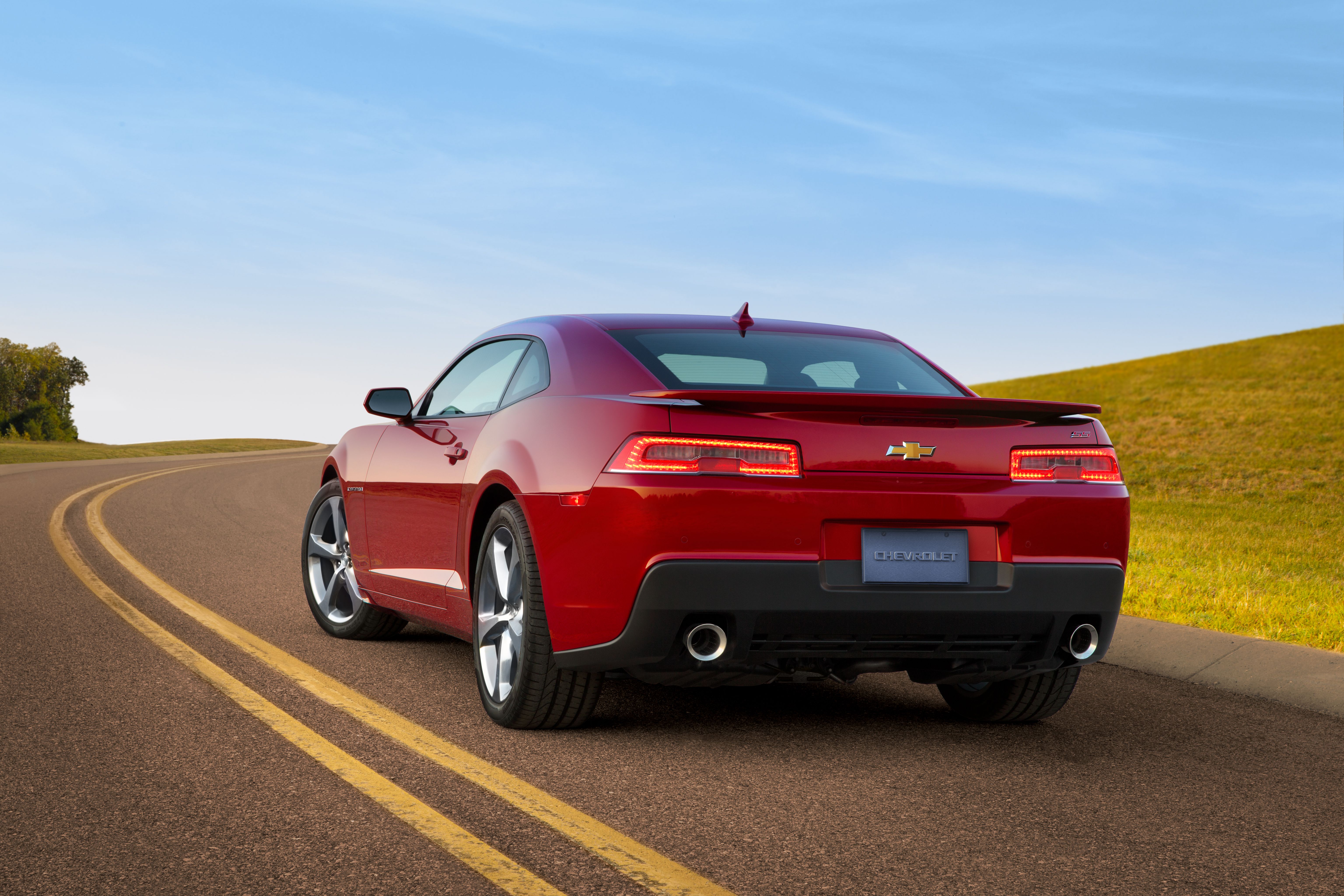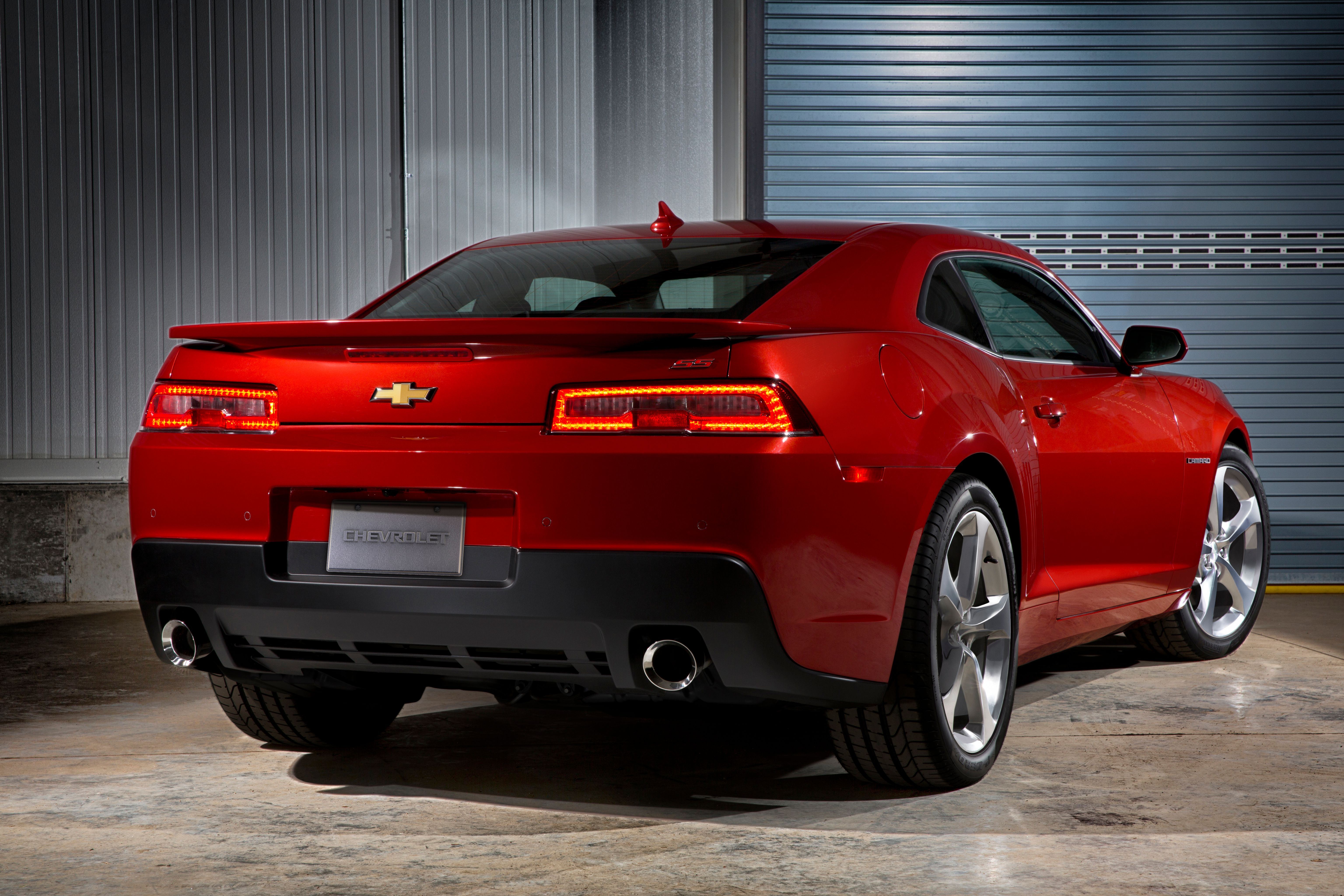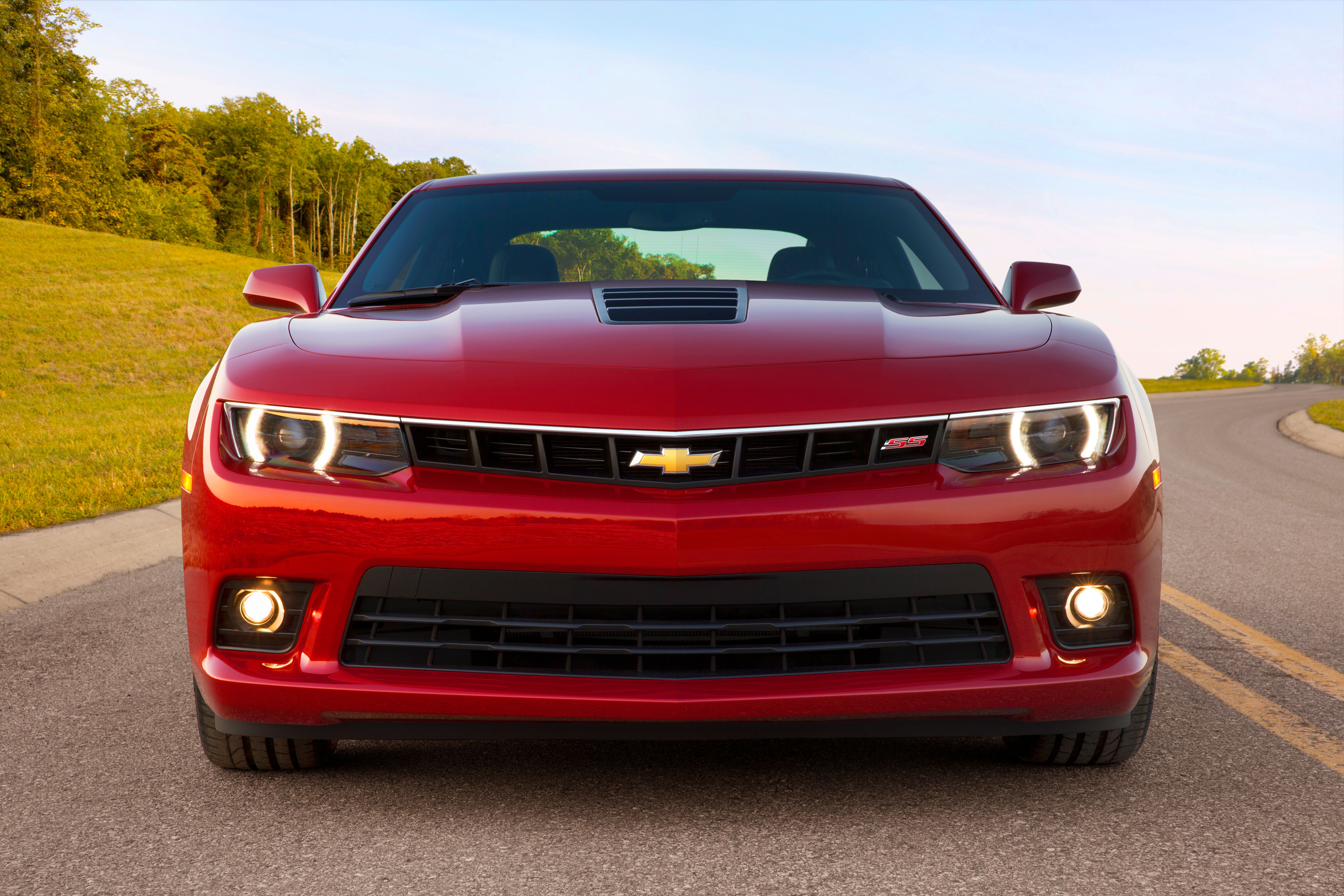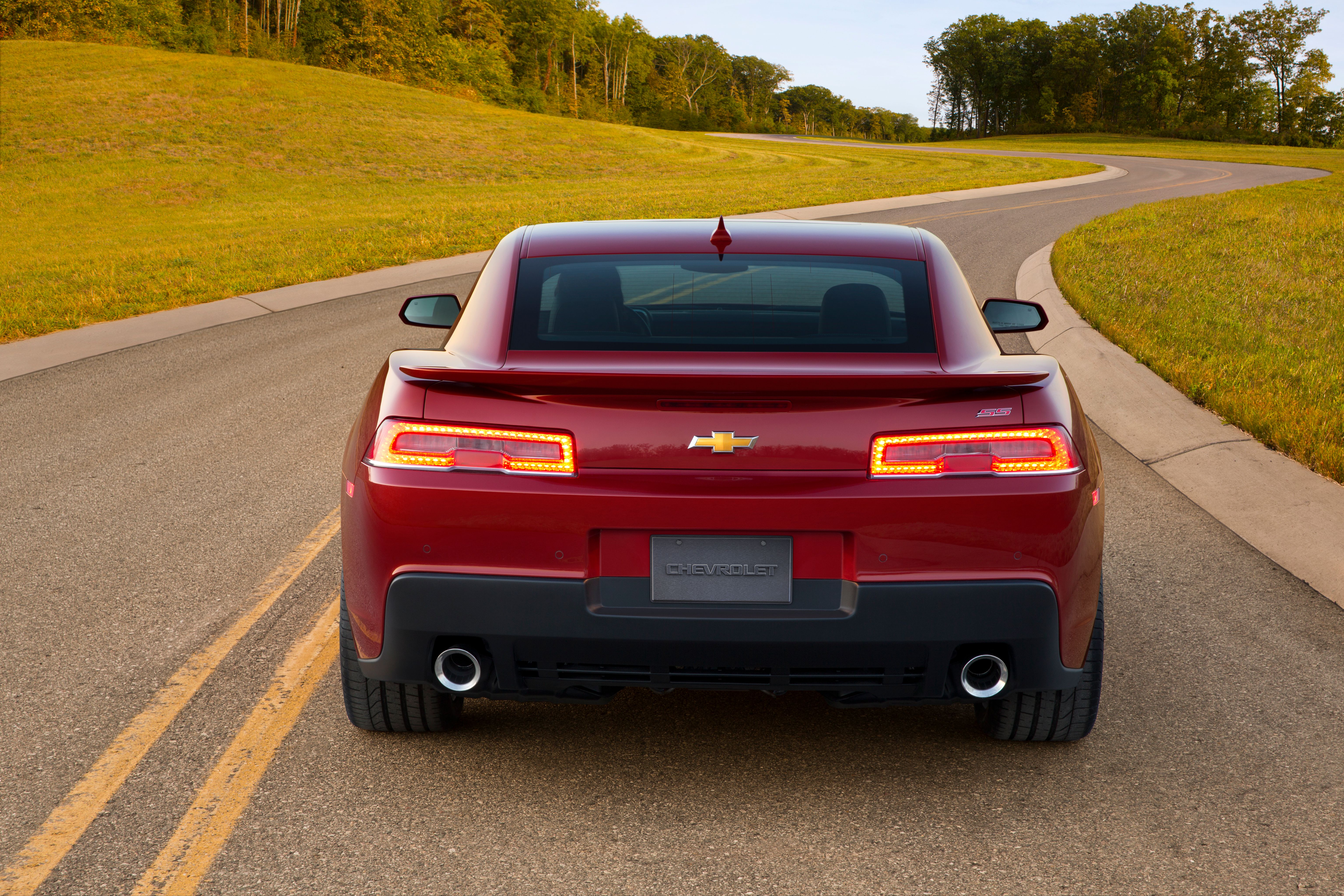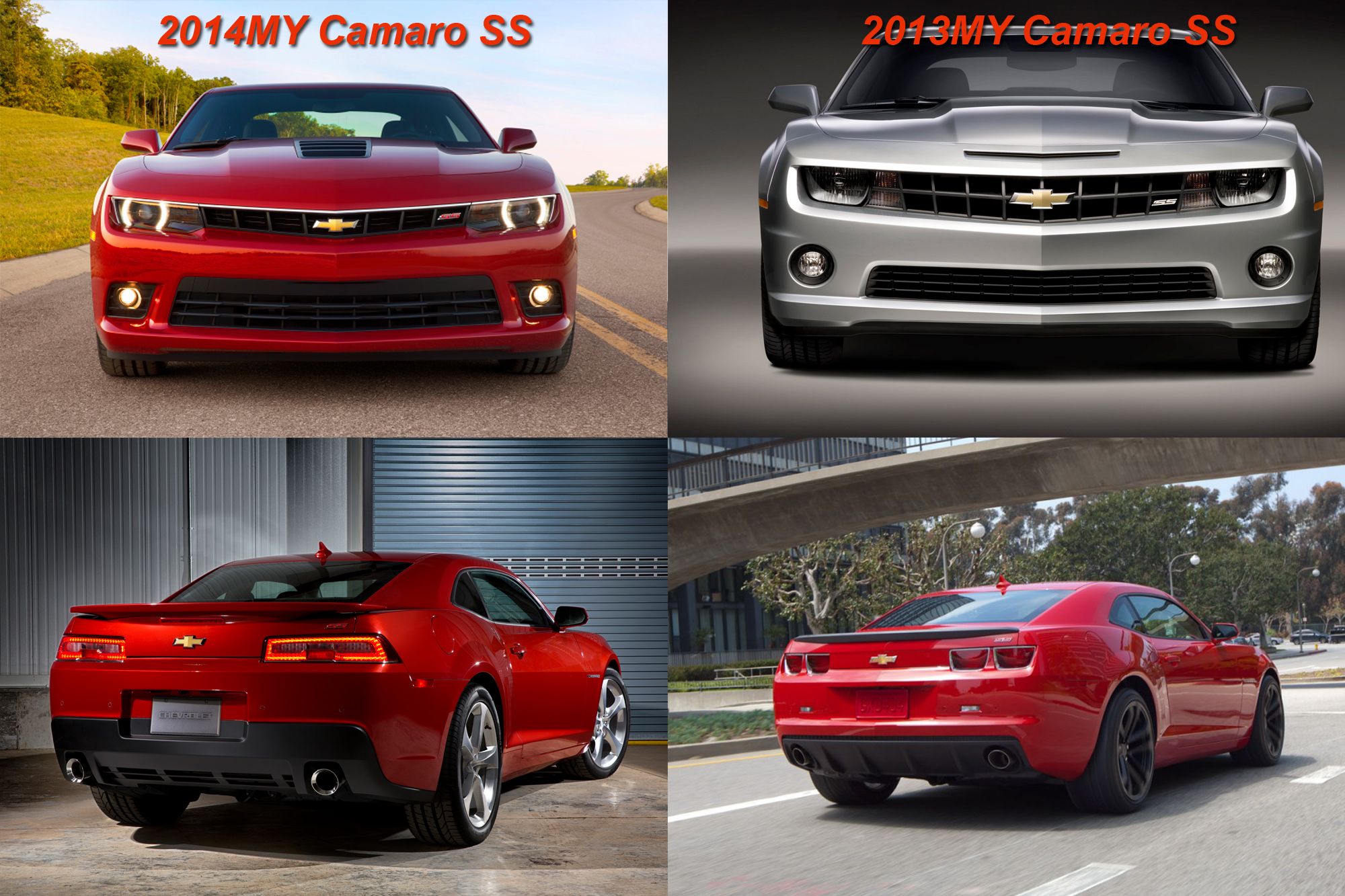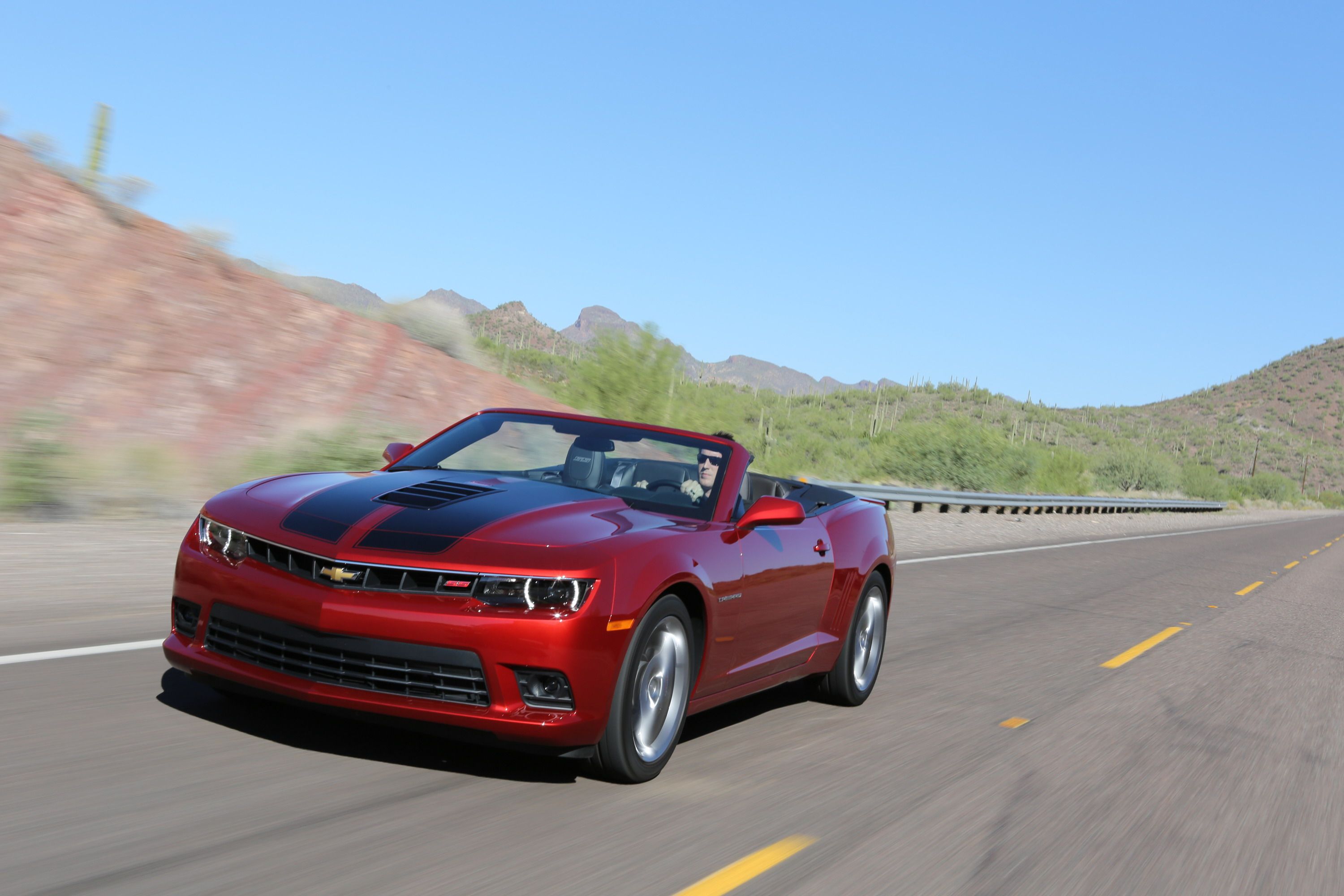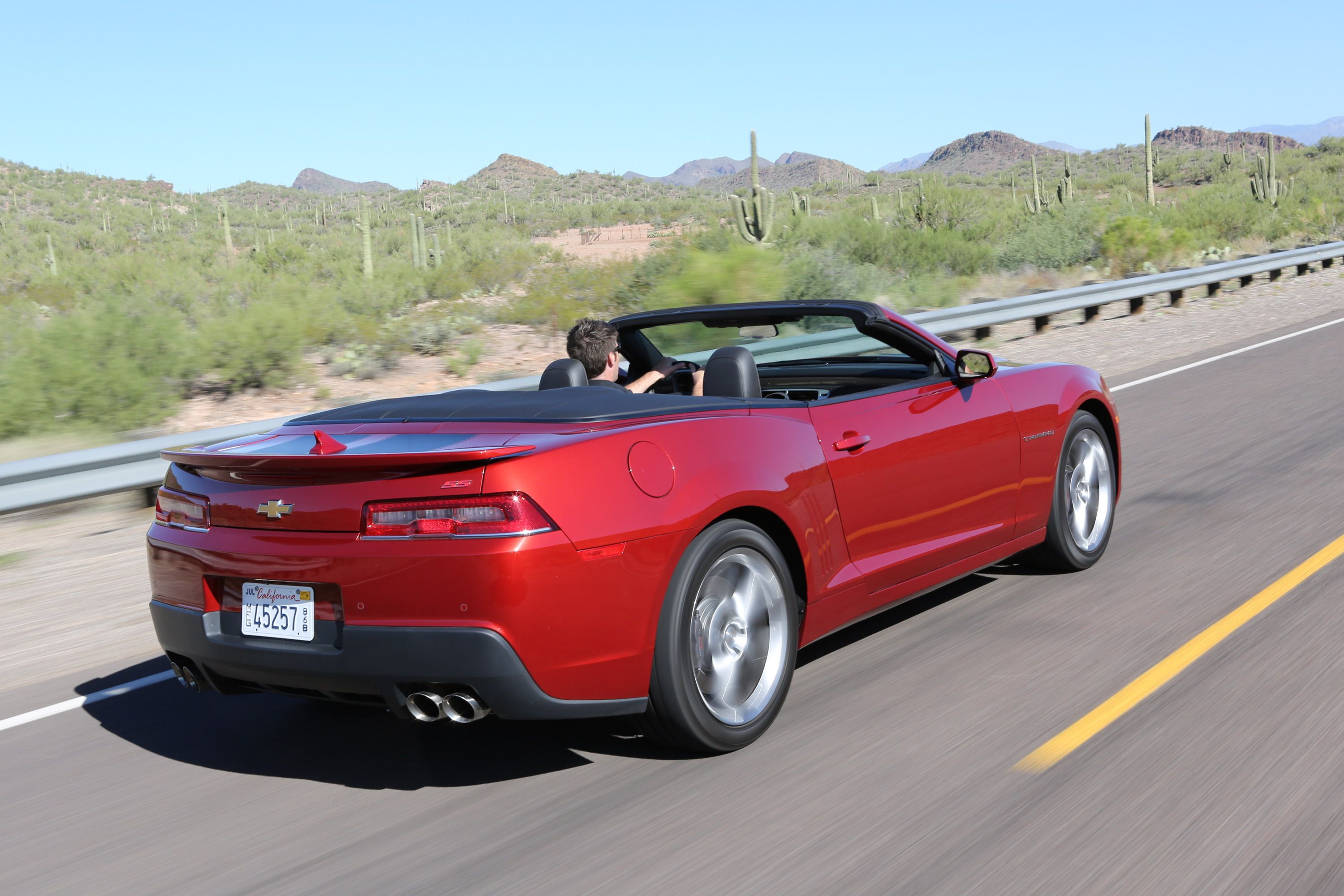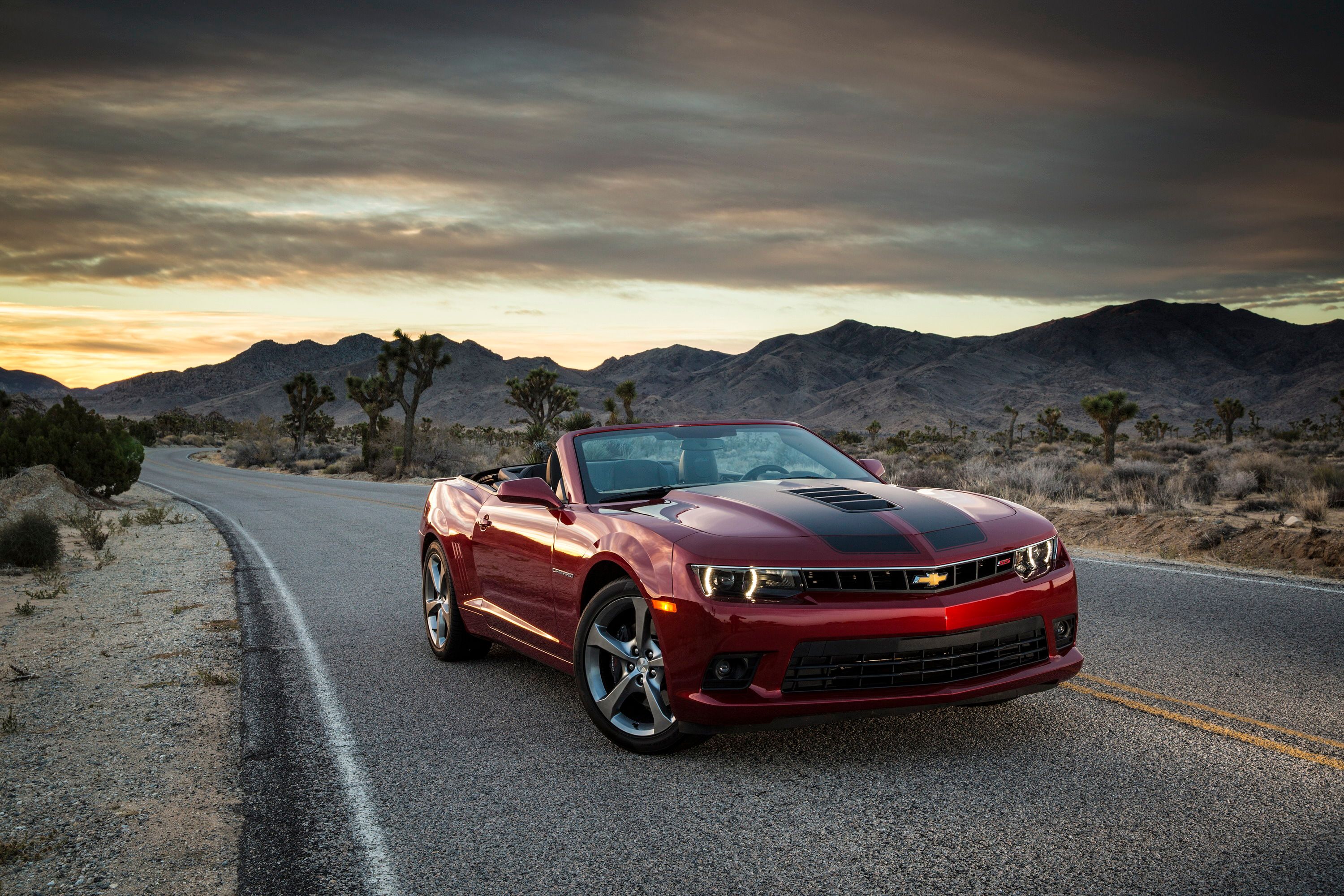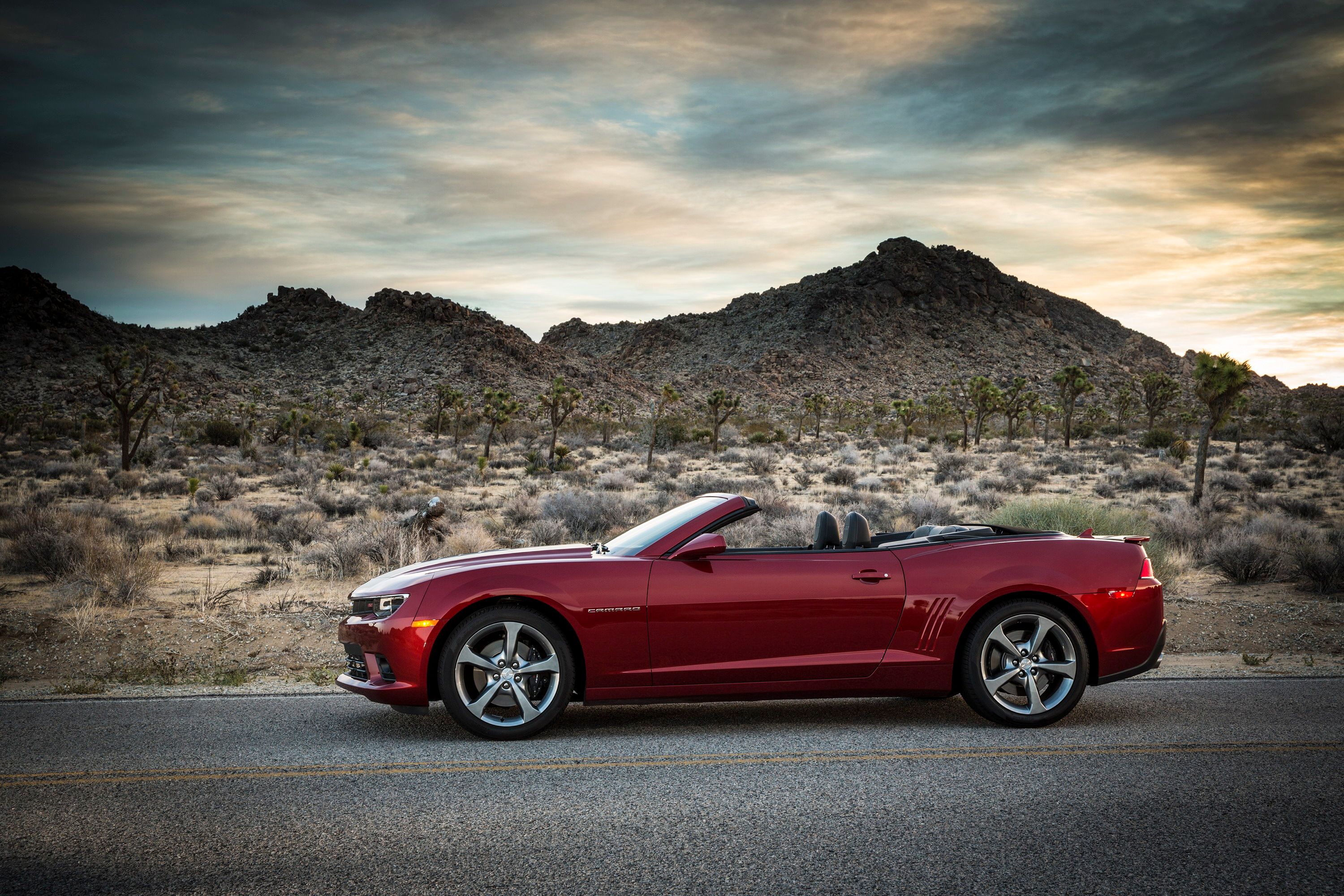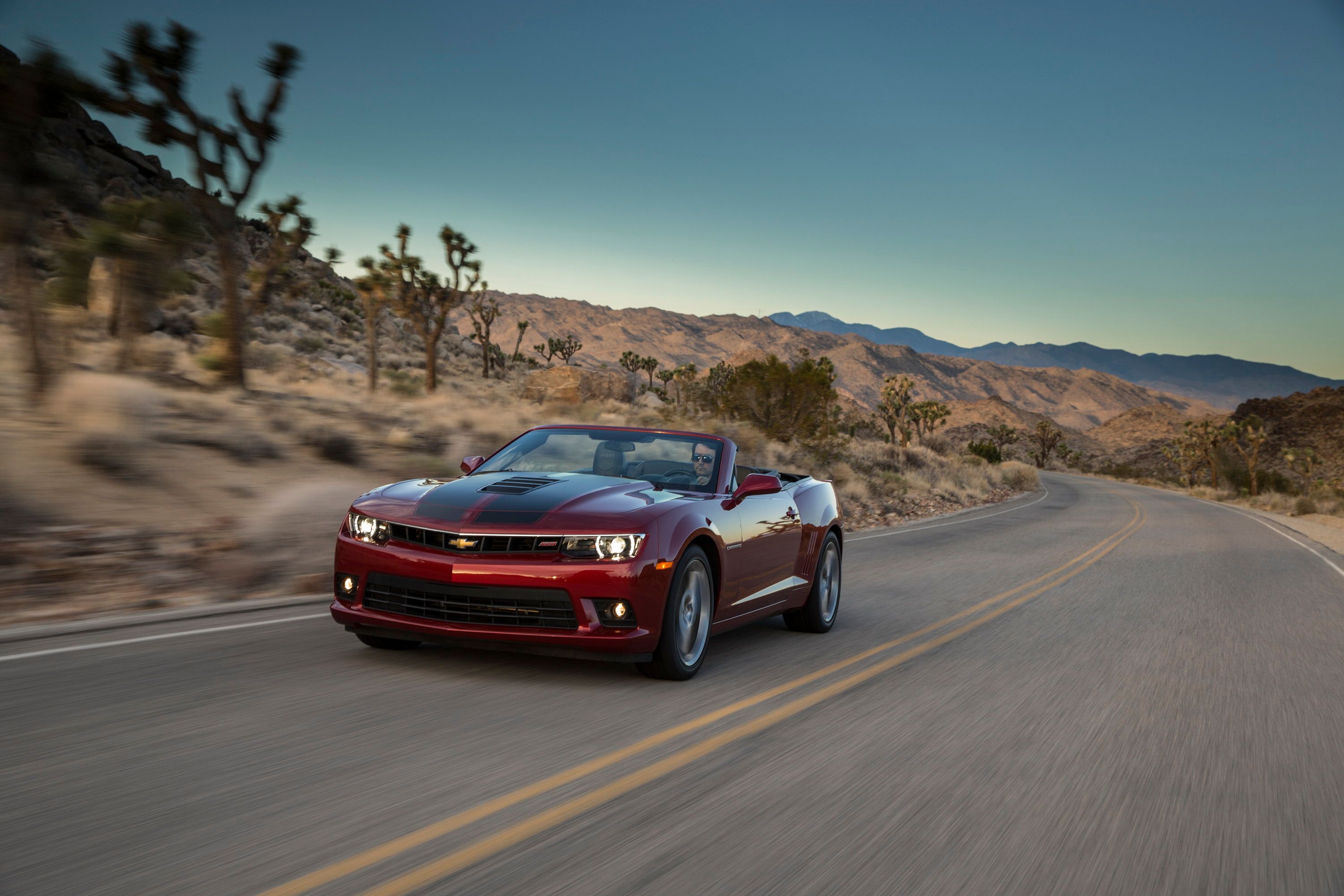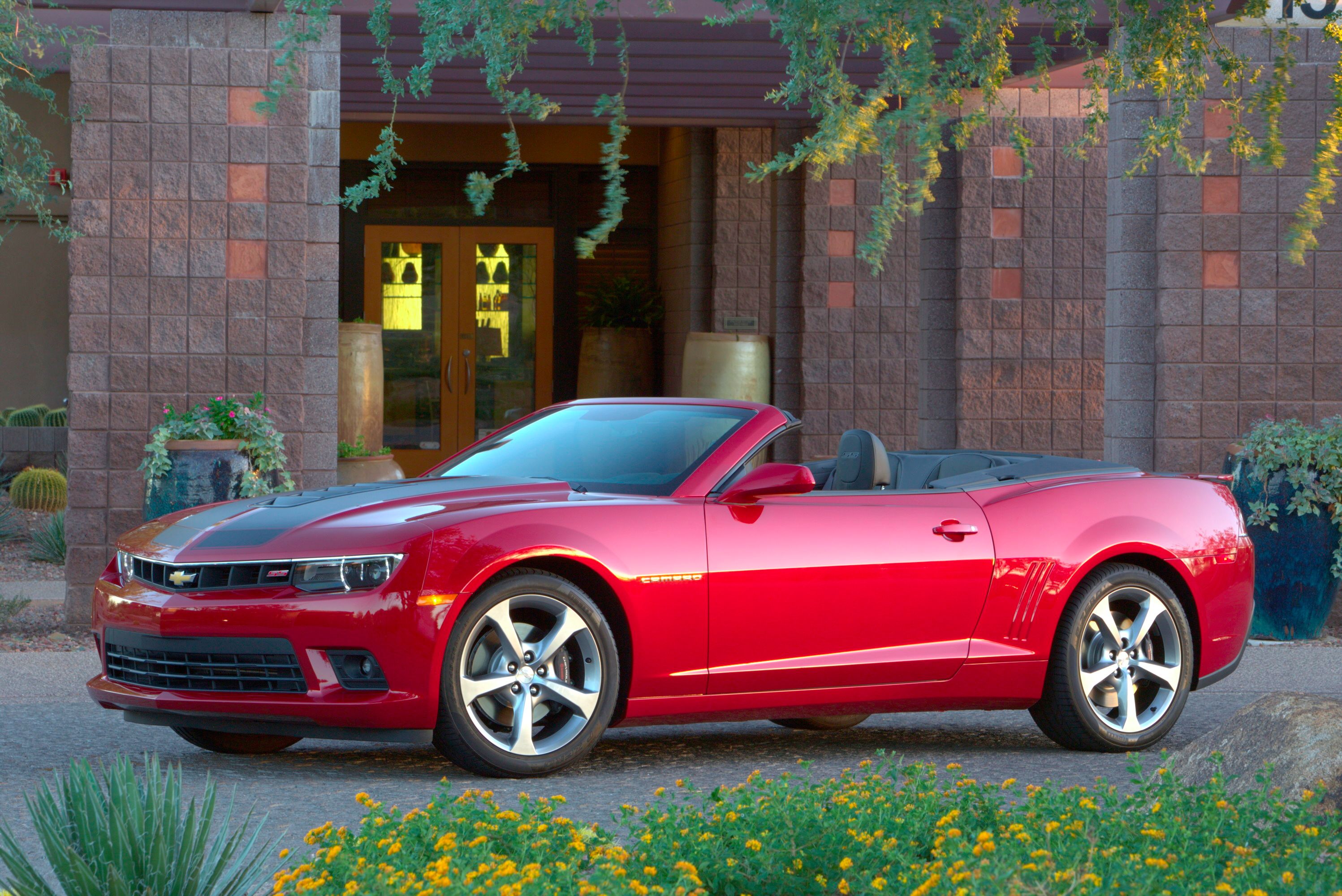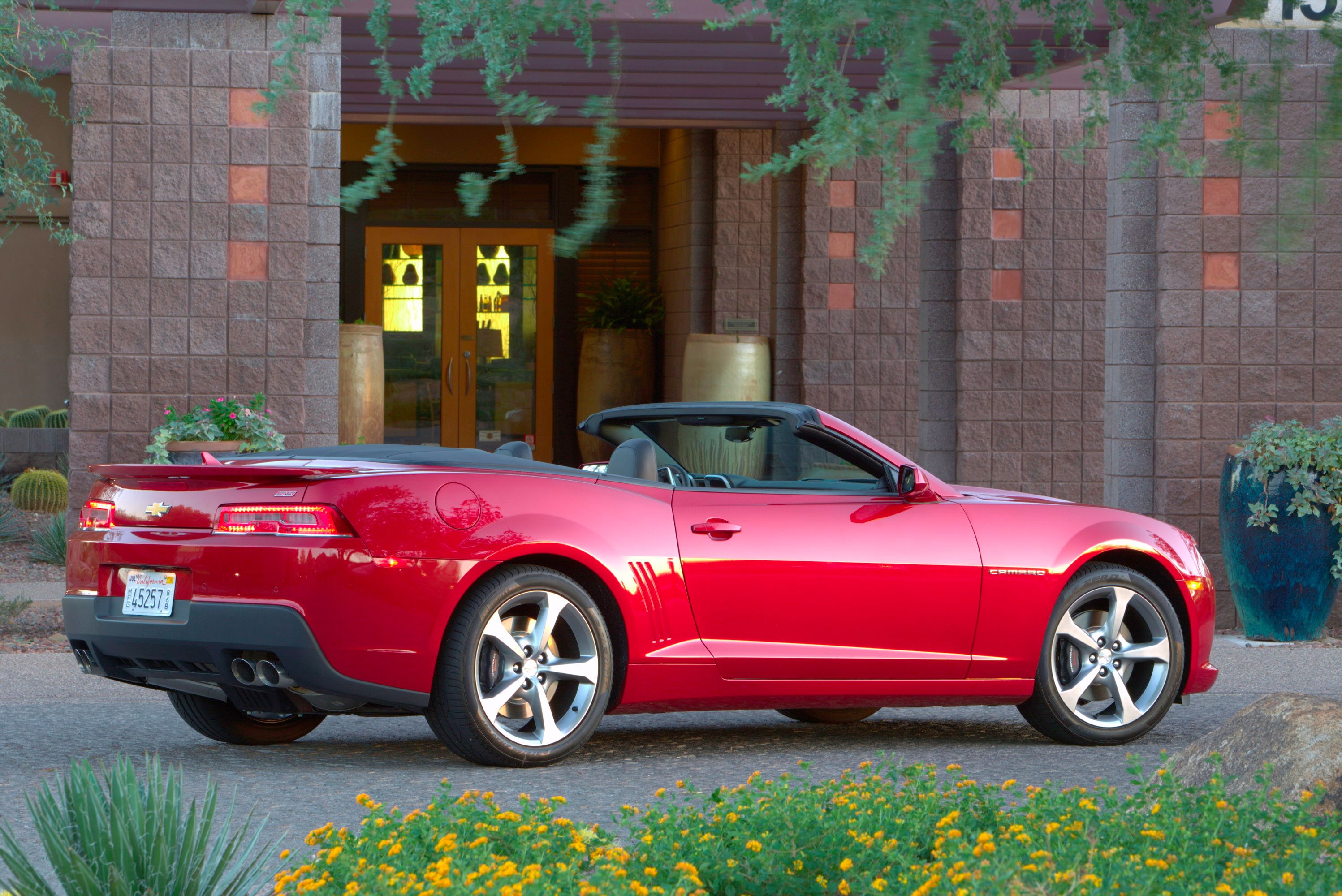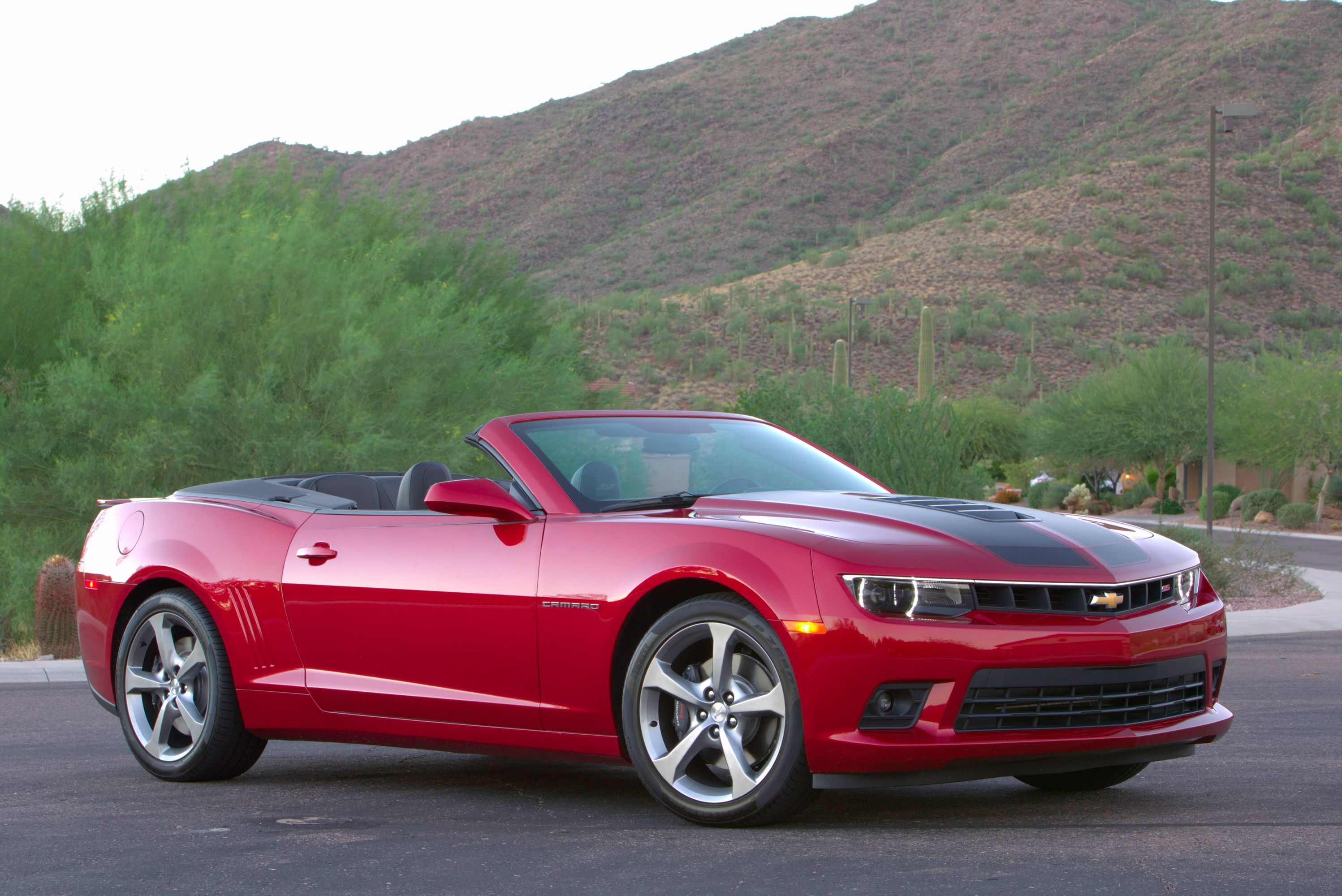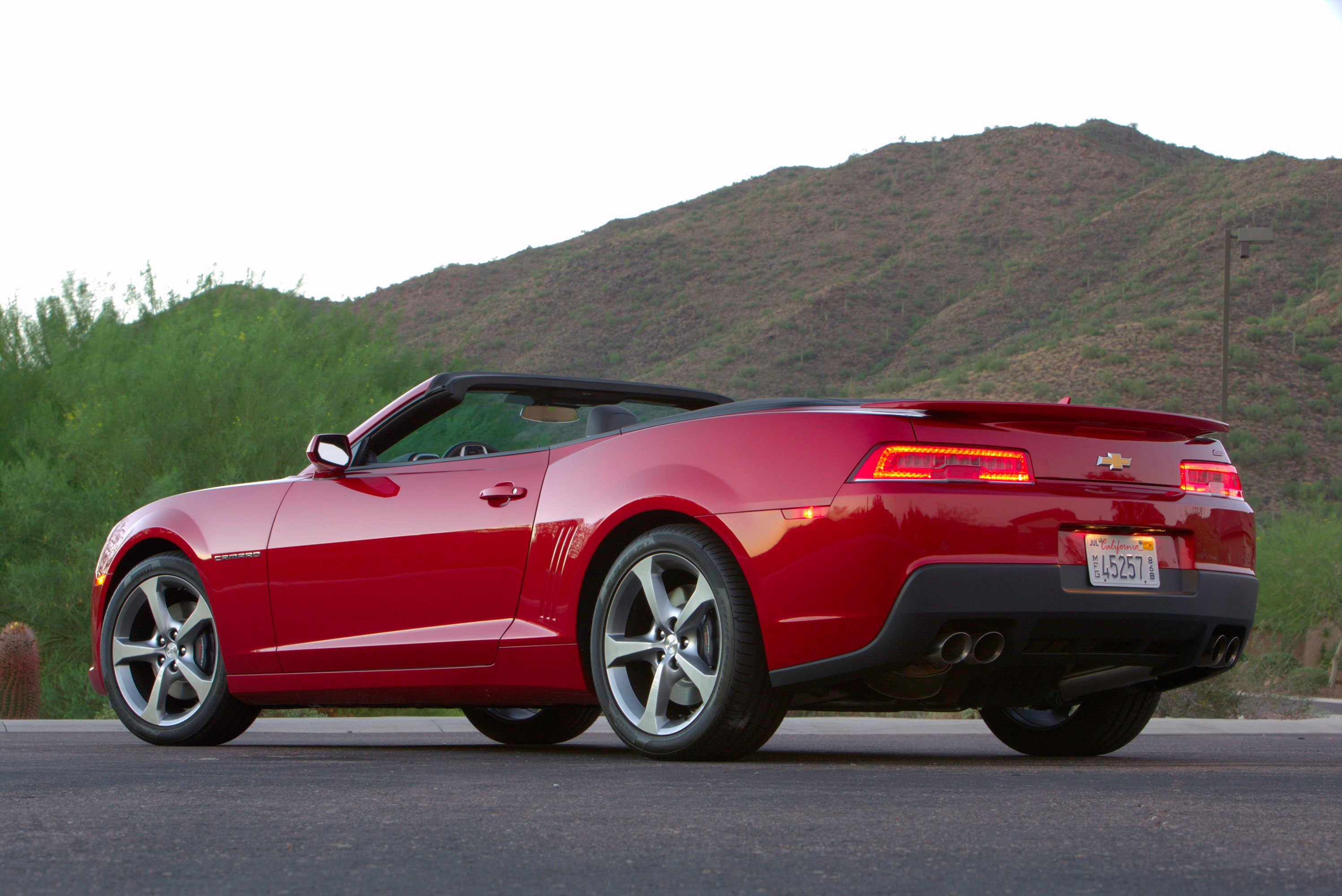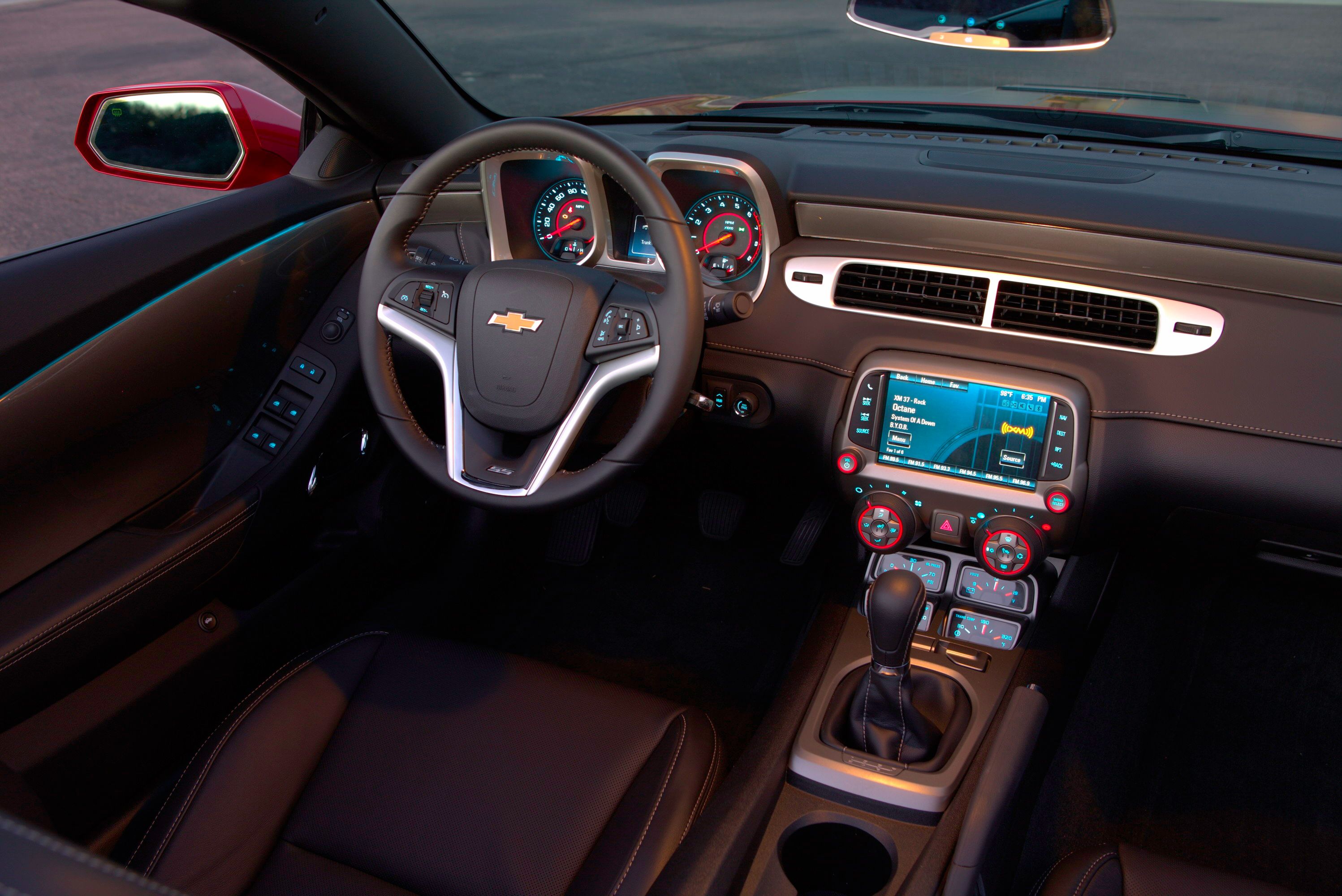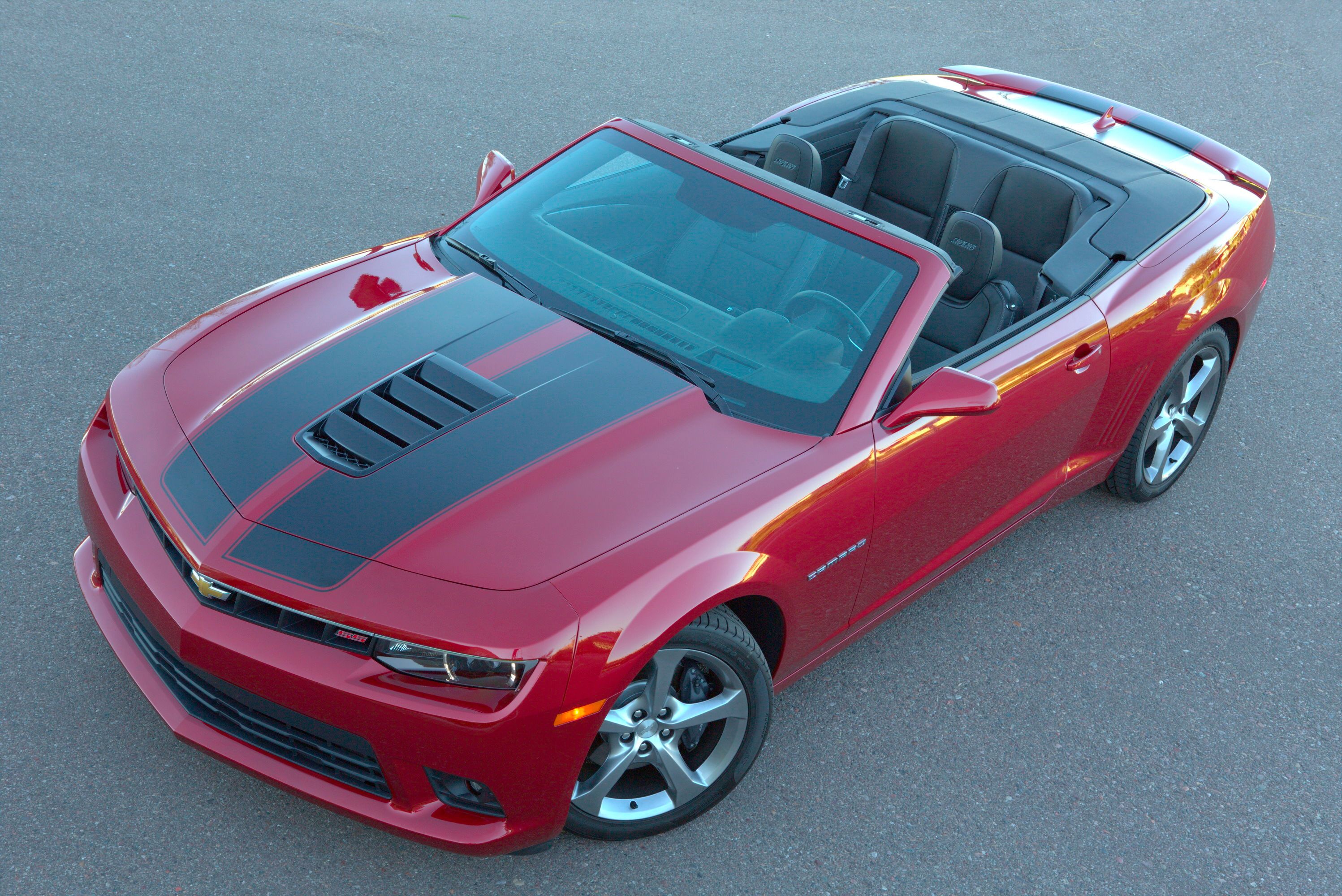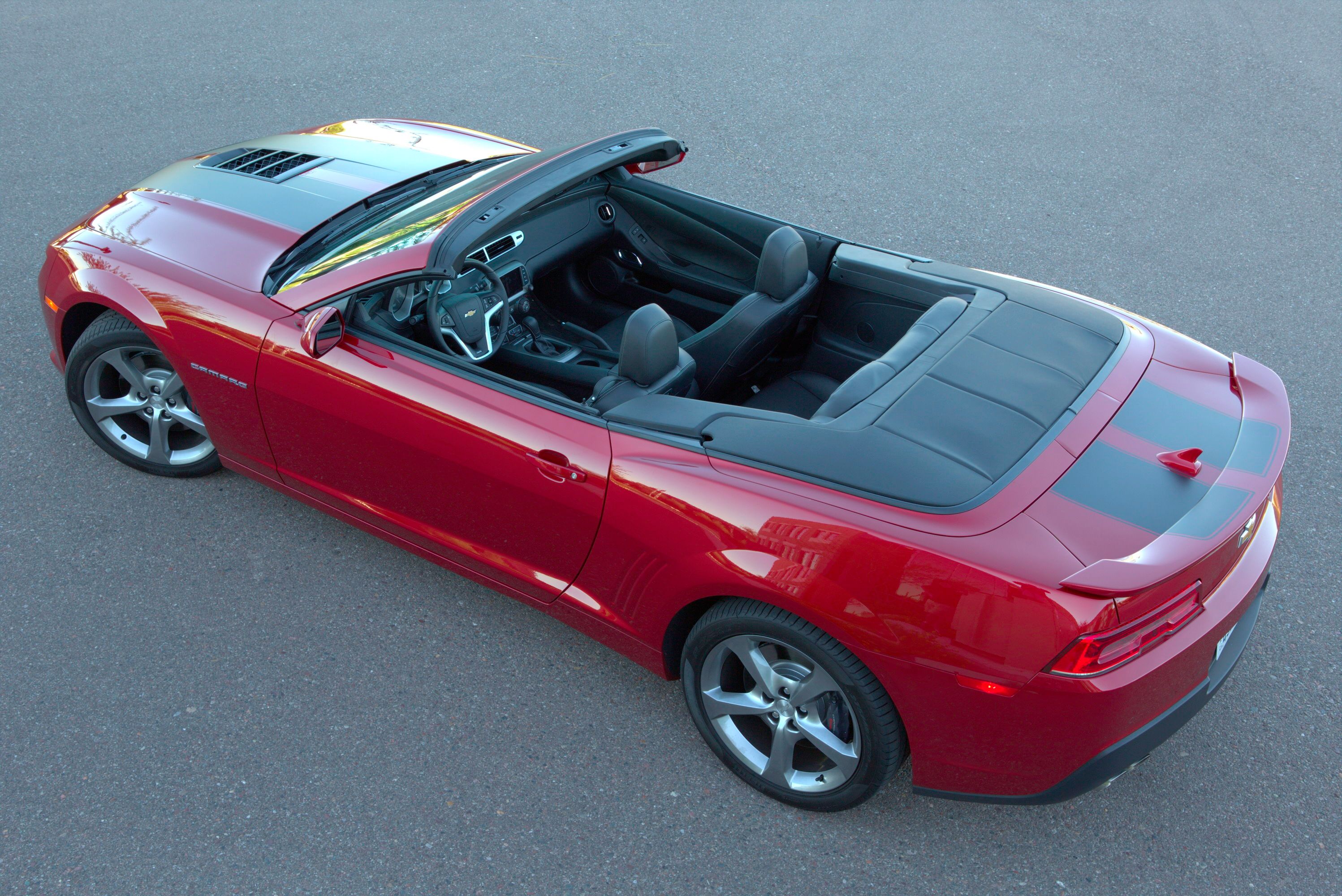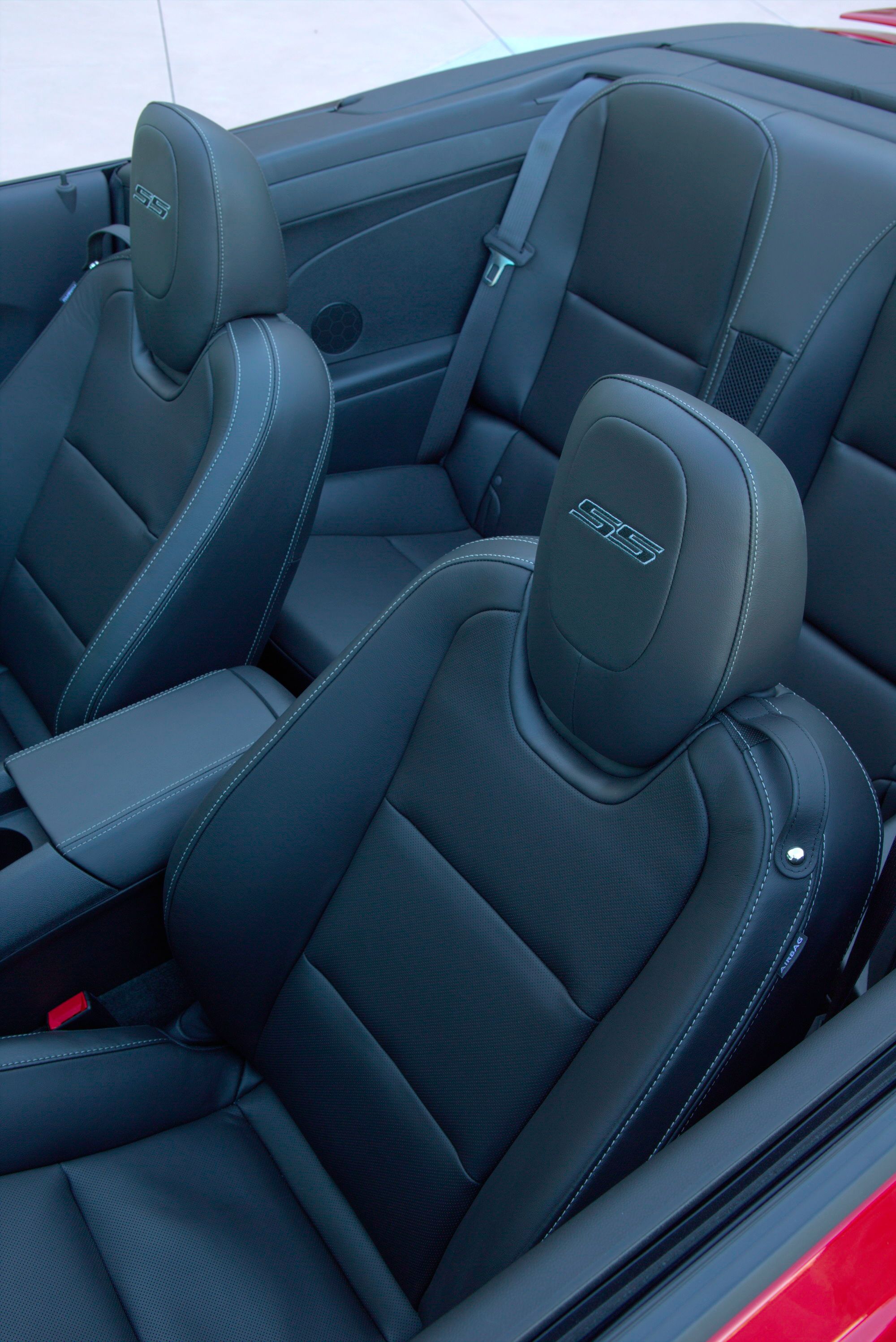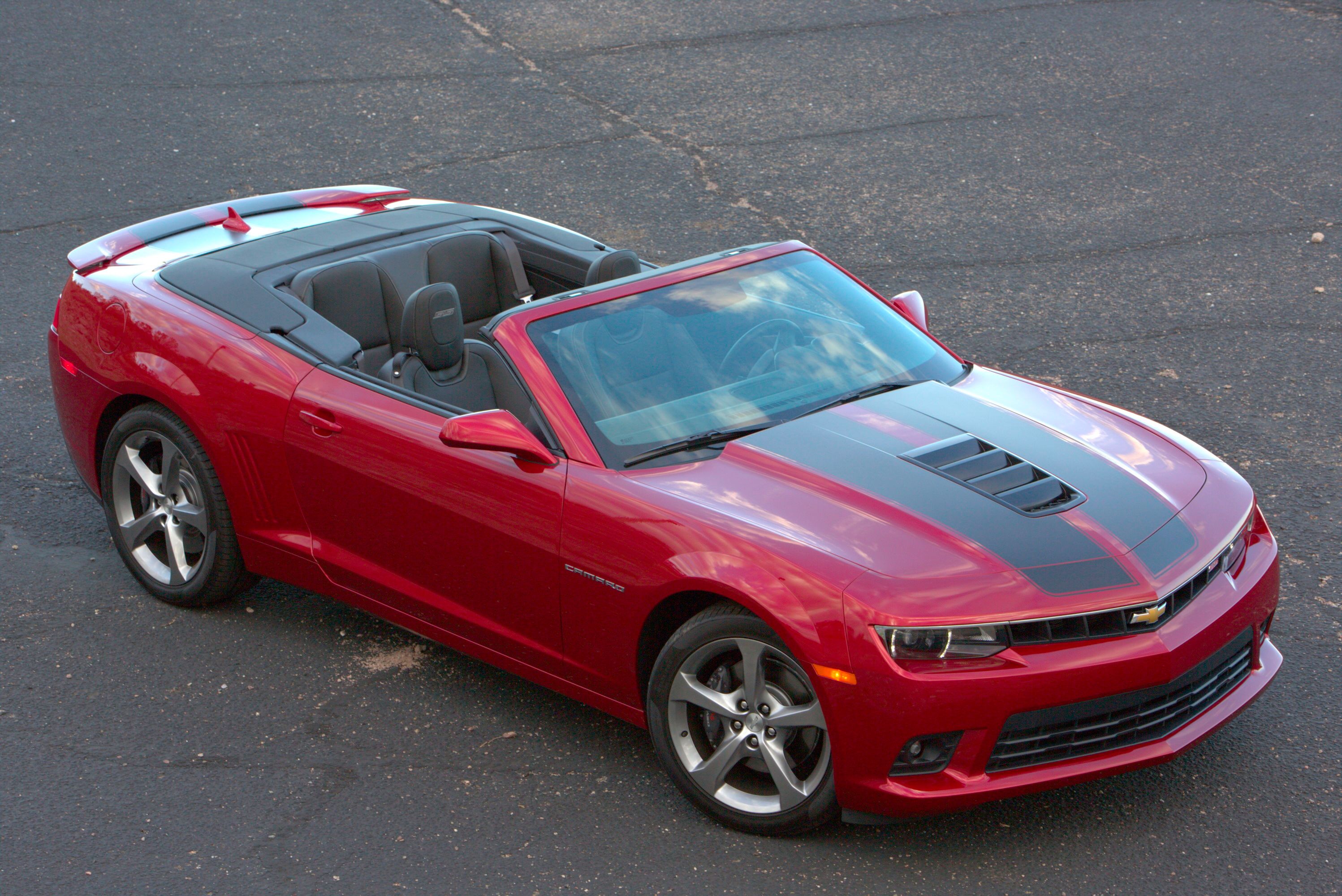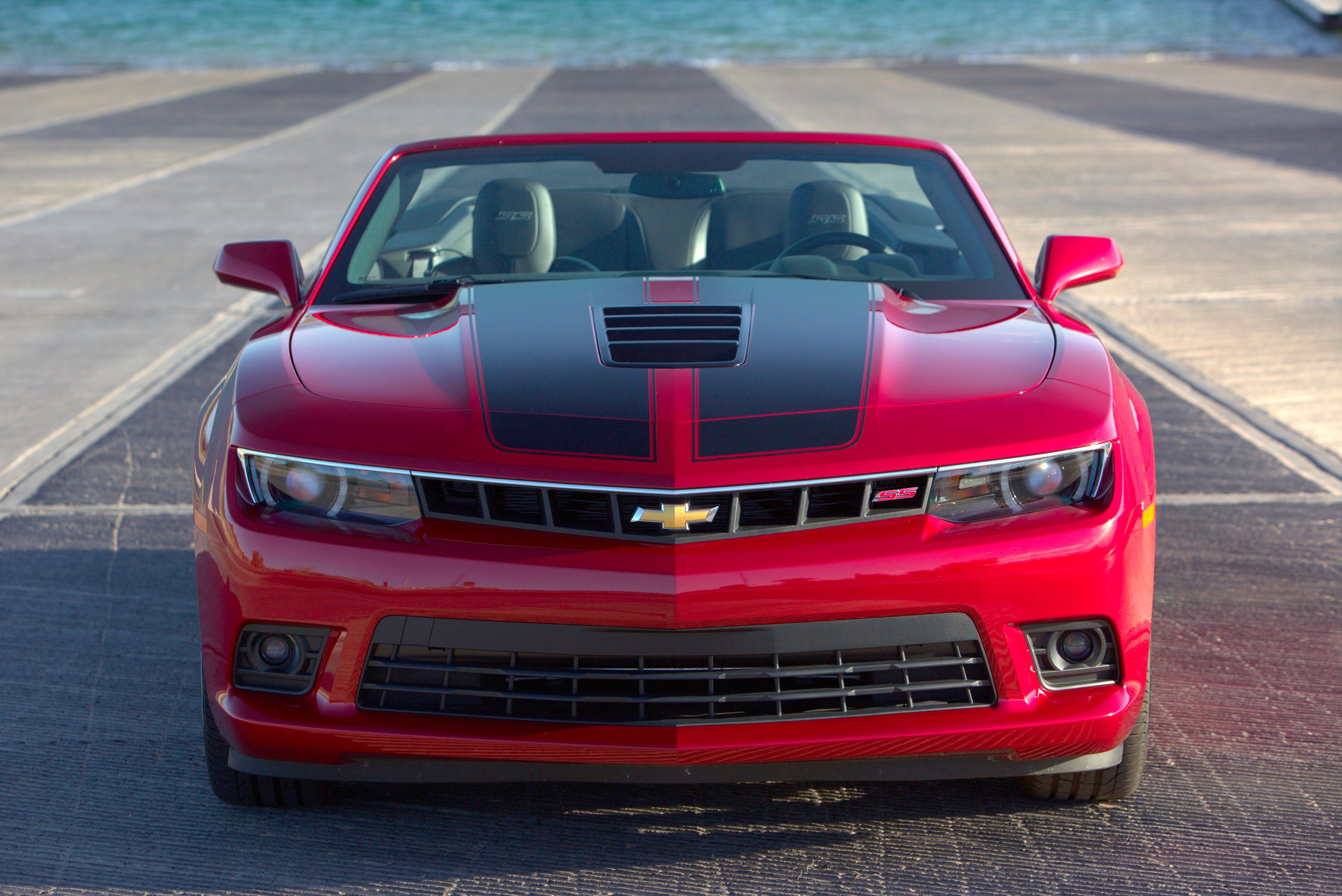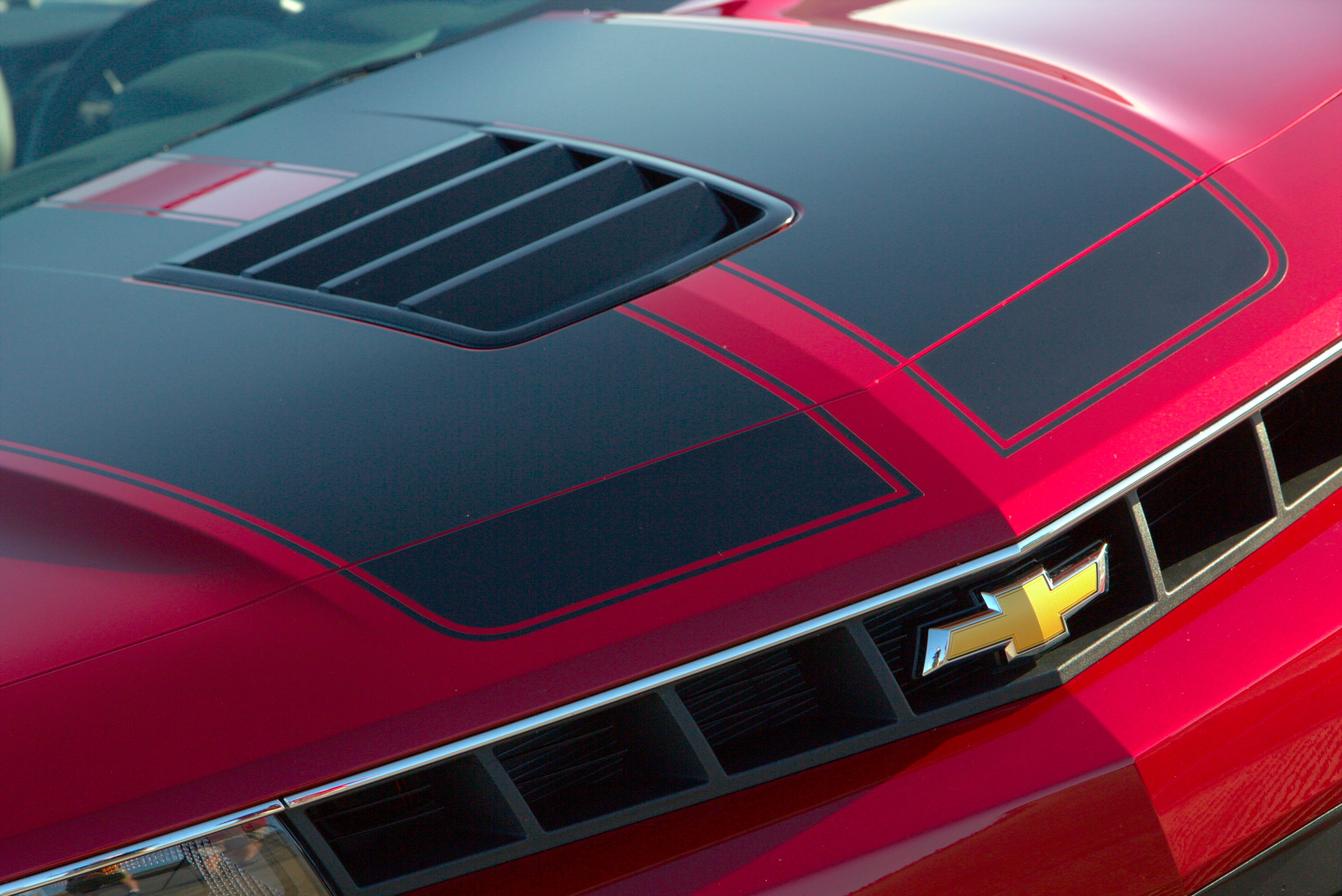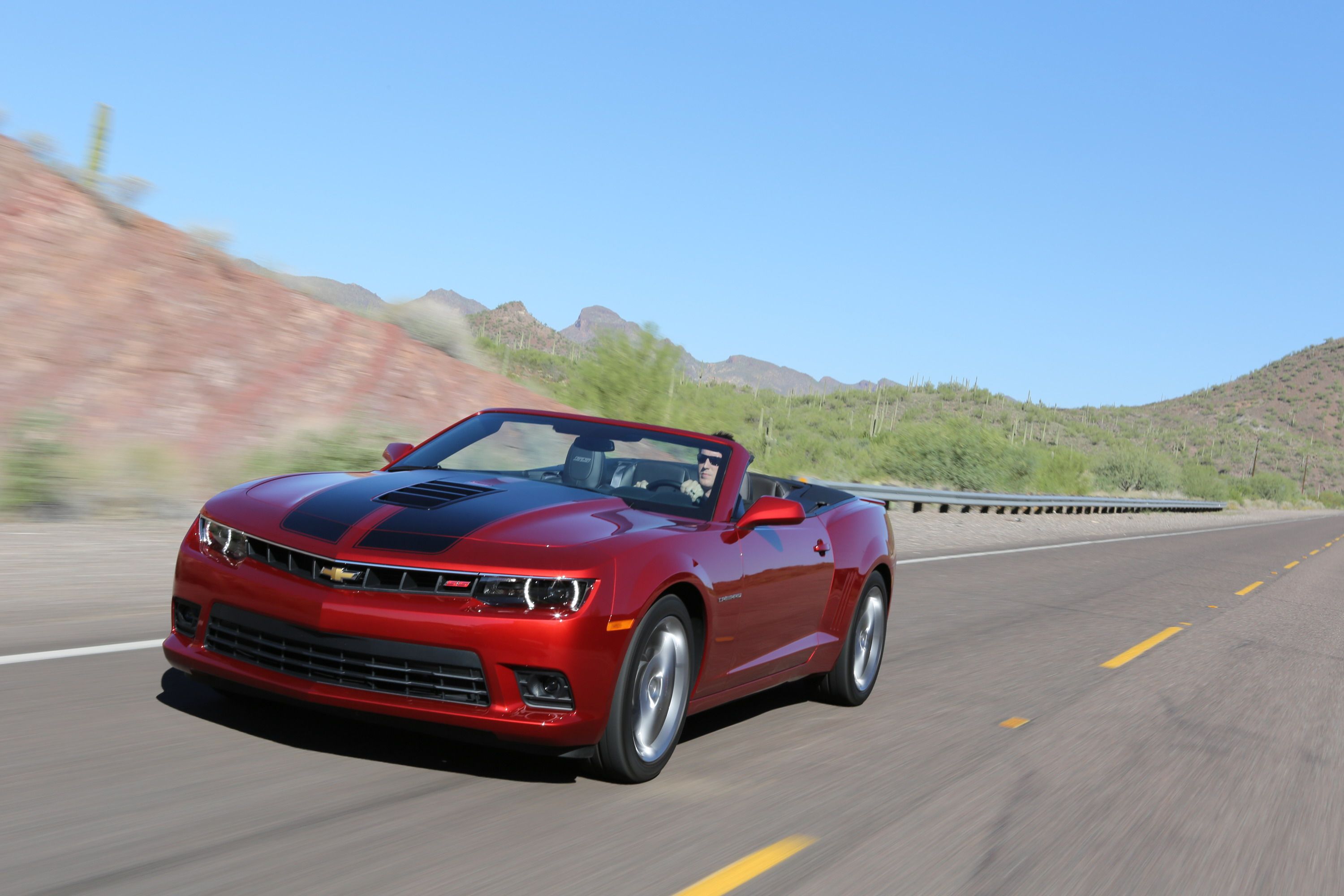After some subtle teasing, GM unveiled the 2014 Camaro SS on Live with Kelly & Michael instead of at the New York Auto Show. Granted, the SS did make its way to the NYIAS, but it was overshadowed by the unveiling of the all-new Z/28.
The updates to the Camaro->ke248 SS are very limited, but nonetheless important. The main architecture of the new Camaro SS remain the same, but the changeable components, like the front fascia, hood, rear fascia and bumper cover are all completely different.
This mid-generation facelift is definitely a welcome sight, as the Camaro’s retro styling was starting to get a little long in the tooth and we need some sort of springboard to prepare us for the upcoming overhaul. We expect this revised look to only last for a few years – one to three years at the most – before Chevy->ke199 unveils the all-new Camaro. So, enjoy this new look while you can.
Updated 05/23/2014: With just one more model year before a full redesign, Chevrolet announced today that the 2015 Camaro SS will continue to be offered with the same features offered for the 2014 model year, except a new Blue Velvet Metallic exterior hue.
Click past the jump to read more about the 2014 Camaro SS
2014 - 2015 Chevrolet Camaro SS
- Make: Array
- Model: 2014 - 2015 Chevrolet Camaro SS
- Engine/Motor: V8
- Horsepower: 426 @ 5900
- Torque: 420 @ 4600
- Transmission: Six-Speed Manual
- [do not use] Vehicle Model: Array
Exterior
On the outside, the 2014 Camaro SS looks pretty similar to the 2013 Camaro SS at first glance. However, upon closer inspection, this facelift is far more comprehensive than expected.
Up front, one of the biggest changes is the deletion of the single nostril in favor of a louvered heat extractor that sits atop the raised center section of the hood. This not only gives the Camaro a meaner look, but also – possibly unintentionally – pays tribute to the dual faux louvers on the mid-1980’s Z/28’s hood. You know, those damn things that would break off in the car wash after 5 to 10 years.
Another change up front is the fascia itself. The grille is now thinner and only features vertical bars, as opposed to the horizontal and vertical bars on the 2013 model. Because of the shrunken grille, the headlights are also squintier and feature wider lenses that cover the headlight and turn signals, giving the Camaro a sinister stare. This shorter grille also extends the Camaro’s nose, and creates a more rounded appearance.
The front, lower skirt is significantly modified, as the 2014 Camaro’s lower air intake is about two or three times larger than the 2013 model’s intake. Additionally, the fog lights now set in larger openings, making them appear to float on the outer edges of the skirt.
Around the back of the Camaro there are some pretty big changes too. The biggest and most shocking of the changes are the new taillights, as Chevy opted to eliminate the two-piece, squared-off circle taillights in favor of thinner, one-piece units that also include the backup lights. Chevy also gave the back end a more pronounced trunk-lid spoiler that is more separated from the trunk than last year’s spoiler. Just below the spoiler is the LED center, high-mounted brake light, which was on the rear package shelf package shelf last year.
The back end is capped off with a significantly larger rear bumper insert that now travels about halfway up the license plate, and a smoother bumper cover.
So, why did Chevy make all of these changes just for a “mild” face lift? The answer is very simple; they are preparing buyers for the new Camaro that is set to hit the stage sometime in the next few years with a completely redesigned and more aerodynamic body.
2014-2015 Chevrolet Camaro SS - Exterior Dimensions
|
Wheelbase (in / mm) |
112.3 / 2852 |
|
Overall length (in / mm) |
190.6 / 4841 |
|
Overall width (in / mm) |
75.5 / 1918 |
|
Overall height (in / mm) |
54.2 / 1376 |
|
Track, front (in / mm) |
63.7 / 1618 |
|
Track, rear (in / mm) |
63.7 / 1618 (SS) |
New For 2015
- Blue Velvet Metallic Exterior Paint
Interior
Well, GM has chosen to either keep the interior a secret, or the changes so small it that it wasn’t worth mentioning. We will go ahead and figure the latter is the most likely reasoning. With that astute assumption out of the way, we do know that the only change is that Chevy added in a new set of Recaro seats up front, to offer up a sportier feel.
Other than those seats, you can expect the same old Camaro interior, including those silly gauge bezels that look like a robot glaring at you. We’re definitely not fans. Hopefully we’re wrong and the interior has changed up a little, but we doubt it.
Drivetrain
The drivetrain is another place not to expect too much change, as GM is likely hard at work developing new powerplants for the sixth-gen Camaro. Under the SS’s hood we’ll likely see the same 6.2-liter V-8 engine with 426 horsepower and 420 pound-feet of torque. We may see some light revisions to help push mpg past the current 24 mpg highway maximum, possibly up to 26 mpg, like the 2014 Corvette Stingray.
The engine will link up to the existing six-speed manual and optional six-speed automatic. With the manual transmission, the Camaro SS should maintain the same 5-second 0-to-60 mph sprint.
2014-2015 Chevrolet Camaro SS - Drivetrain/Specifications
|
Type |
6.2L V-8 (LS3, L99) |
|
Displacement (cu in / cc) |
376 / 6162 |
|
Bore & stroke (in / mm) |
4.06 x 3.62 / 103.25 x 92 |
|
Compression ratio |
10.7:1 (LS3); 10.4:1 (L99) |
|
Horsepower (hp / kW @ rpm) |
426 / 318 @ 5900 (LS3) |
|
Torque (lb-ft / Nm @ rpm) |
420 / 569 @ 4600 (LS3) |
|
Maximum engine speed (rpm) |
6000 (L99) |
Prices
2014 Chevrolet Camaro SS prices
|
Model |
Price |
|
Chevrolet Camaro 1SS |
$33,355 |
|
Chevrolet Camaro 2SS |
$37,155 |
Competition
2014 Ford Mustang GT
For 2014, the Ford Mustang carries over in style and power. It carries with it a 5.0-liter V-8 with 420 horsepower and 390 pound-feet of torque. With its live rear axle, which is rumored to go away in 2015, the Mustang simply can't hang with the Camaro SS on a road-racing circuit. However, straight-line speed is a different story, as the Mustang should carry the same 4.7-second 0-to-60 time as the 2013 model year, making it 0.3 seconds faster than the Camaro SS.
2014 Dodge Challenger R/T
The 2014 Challenger is still a relative unknown to this point, but we assume it will carry on with only very minor revisions. So, we expect to see the same retro design with a 5.7-liter V-8 engine with 376 horsepower and 410 pound-feet of torque. This makes the Challenger R/T the slowest of the pony cars at 5.5 seconds to 60 mph. In the Challenger's favor, it is the least expensive of the group at $29,999 (2013 prices).
Conclusion
At first, we were slightly disappointed with the new Camaro’s look, but as we took a better look at it, we started liking what GM did with it. It is a big enough change to be noticed, but not overly shocking. Plus, it is a nice transition between the fifth and sixth generations. Overall, we have to tip our hats to GM on this one; let’s just hope they don’t kill the Camaro’s heritage with the sixth generation…


